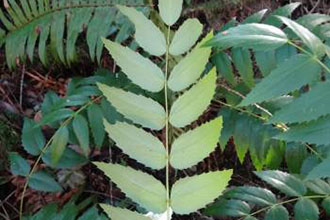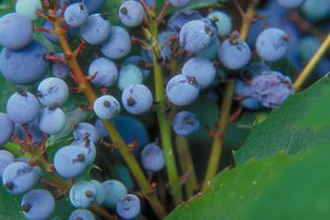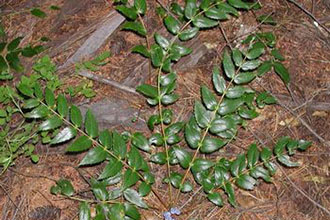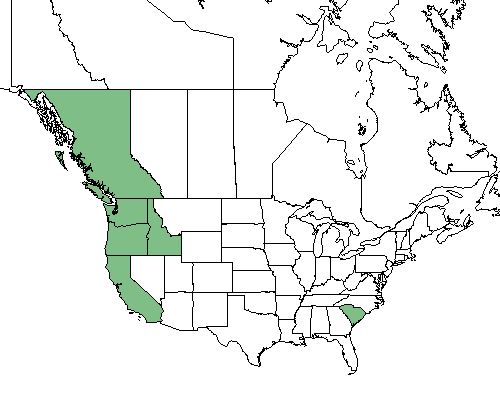Taxonomy: Kingdom - Plantae (plants). Subkingdom - Tracheobionta (vascular plants). Superdivision - Spermatophyta (seed plants). Division - Magnoliophyta (Flowering plants). Class - Magnoliopsida (Dicotyledons). Subclass - Magnoliidae. Order - Ranunculales. Family - Berberidaceae (Barberry familly). Genus -Mahonia Nutt. . Species - Mahonia repens Nutt. - Creeping barberry.
Identification: Creeping barberry, also known as Oregon grape, creeping Oregon grape, creeping mahonia, creeping hollygrape, ash barberry, and dwarf Oregon grape, is an upright to recumbent, evergreen shrub 12 to 40 cm in height and 3 to 9 mm in basal diameter. The stems are solitary, usually unbranched but occur in clonal groups arising from rhizomes. The main root is stiff and deep, and the lateral roots are short and fine. Stem bark is slightly rough and gray brown, and the inner bark is bright yellow, especially the inner root bark. The wood and pith are yellow. The alternate leaves, which have petioles 2 to 3 cm long, are pinnately compound with three to seven leathery, sessile, ovate leaflets that are dull on both surfaces, and have spiny-toothed margins.
Low in stature and moderately tolerant of shade, creeping barberry is not highly competitive. In Utah, it will not grow in heavy grass and forb stands. It is most frequently seen in rocky or gravely areas with low vegetative cover or under open conifer or hardwood stands with sparse understory vegetation. However, the species is reported to be the dominant understory shrub in closed-canopy Douglas fir in central Idaho. Creeping barberry apparently grows well under conifers that produce a thick layer of decomposing needles. However, it does not flower when growing in shade.
The fruits become edible to humans after they have passed through at least one frost. They are used to make jelly, wine, and a juice drink. Native Americans used the berries and the roots for lavender and yellow dyes, respectively, and made teas from the roots to treat a range of afflictions. Creeping barberry contains the alkaloids berberine and oxyacanthin. The species is an alternate host for black stem rust of cereal grains.



